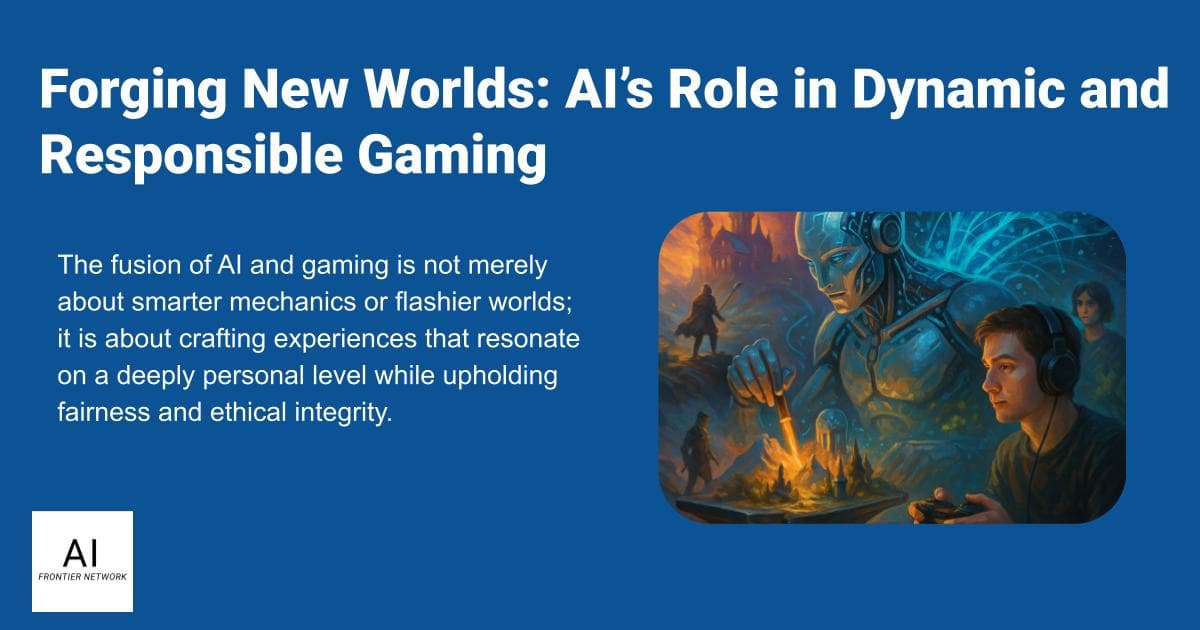The integration of artificial intelligence into gaming is reshaping the industry, pushing boundaries in design, player engagement, and narrative depth. From adaptive storytelling to lifelike non-player characters (NPCs), AI is not merely a tool but a co-creator of immersive worlds. Yet, as this technology evolves, it raises profound questions about player agency, emotional impact, and ethical responsibility. Drawing from the insights of industry professionals and enthusiasts, this article explores how AI is transforming gaming, the opportunities it unlocks, and the challenges that must be navigated to ensure it enhances rather than overshadows the human essence of play.
Redefining Player Experience Through Personalization
AI's ability to tailor gameplay to individual preferences is revolutionizing how players interact with virtual worlds. Srinivas Chippagiri highlights how AI learns personal playstyles, enabling procedural generation of worlds, behavior-driven customizations, and adaptive difficulty. This creates experiences that feel uniquely crafted for each player, maintaining engagement without disrupting the core mechanics. Similarly, Rajesh Sura points to AI-driven sidekicks that adjust tone based on player behavior and levels that auto-calibrate to sustain a state of flow, ensuring players remain challenged yet not overwhelmed. Hina Gandhi adds that AI's predictive analytics can dynamically adjust difficulty in games like chess, creating balanced experiences that cater to both casual players and grandmasters training for tournaments.
This personalization extends beyond mechanics to narrative. Sudheer A. notes that AI enables games to adjust story arcs and dialogue in real-time based on player choices, crafting responsive, immersive worlds. Such advancements allow for ecosystems of choices and consequences, where every decision shapes the game's trajectory, as Dmytro Verner emphasizes with AI-driven analytics that adapt content to maximize engagement.
The Rise of Lifelike NPCs and Emotional Complexity
The evolution of NPCs from scripted entities to emotionally responsive characters marks a significant leap in gaming. Jatinder Singh describes how Unity's ML-Agents toolkit enables NPCs to learn from player interactions, creating dynamic adversaries in survival games that force players to evolve their strategies. Rajarshi T. underscores the development of smart characters that make games feel uniquely personal, while Sanjay Mood reflects on how NPCs that remember past interactions or react organically lend a human-like quality to games like The Last of Us.
However, this lifelike quality introduces ethical dilemmas. Sudheer A. questions whether players should always know they are interacting with AI, as emotional attachments to NPCs blur the line between fiction and reality. Srinivas Chippagiri further probes the implications of forming bonds with characters that seem to feel, warning of potential emotional manipulation. Dmytro Verner emphasizes the design challenge of ensuring player attachment does not exploit genuine emotions, urging developers to tread carefully as NPCs gain memory and emotional depth.
Enhancing Fairness and Creativity with AI Tools
Beyond player-facing features, AI is transforming the development process itself. Dmytro Verner details how reinforcement-learning bots accelerate multiplayer map testing, identifying balance flaws faster than human QA teams, while machine-vision routines detect cheating by analyzing movement and aiming patterns. Hina Gandhi echoes this, noting AI's role in flagging suspicious behavior to maintain fairness. Jatinder Singh highlights Unity's tools for automatic game balancing and content generation, empowering solo developers to create vast, dynamic worlds.
On the creative front, Nikhil Kassetty advocates for AI as an enabler of human creativity, handling technical complexities to preserve the "beautiful failures" and emergent narratives that define memorable games. Rajarshi T. reinforces this, stressing that AI should facilitate creativity, not replace human designers. Naomi Latini Wolfe extends this vision, calling for AI to foster inclusive gaming experiences by addressing biases and ensuring players feel represented.
Boundaries and Player Agency
As AI assumes a larger role in game design, the balance between immersion and intrusion becomes critical. Ram Kumar N. poses a pivotal question: Does AI support player agency or subtly manipulate it? This tension is echoed by Rajesh Sura, who asks how much narrative control should be ceded to AI to maintain ethical responsibility. Tommy T. warns that overly unpredictable AI behavior risks disrupting narrative flow and eroding player trust, emphasizing the need for consistency in gameplay.
Naomi Latini Wolfe advocates for ethical design, ensuring AI does not perpetuate harmful stereotypes. Sudheer A. raises the issue of transparency, suggesting players deserve clarity about AI's role in their experience. These insights collectively underscore the need for clear boundaries to prevent AI from crossing into manipulation, ensuring it amplifies rather than undermines the human touch that defines gaming's magic.
Conclusion: A Collaborative Future for AI and Human Creativity
The fusion of AI and gaming is not merely about smarter mechanics or flashier worlds; it is about crafting experiences that resonate on a deeply personal level while upholding fairness and ethical integrity. From adaptive narratives and lifelike NPCs to streamlined development and inclusive design, AI is unlocking unprecedented possibilities. However, its potential must be harnessed thoughtfully. Developers must prioritize transparency, and player agency to ensure AI serves as a creative partner rather than a controlling force. As Nikhil Kassetty envisions, the future lies in a harmonious collaboration between AI and human creativity, where technology amplifies the emotional connections and unexpected moments that make gaming unforgettable.














